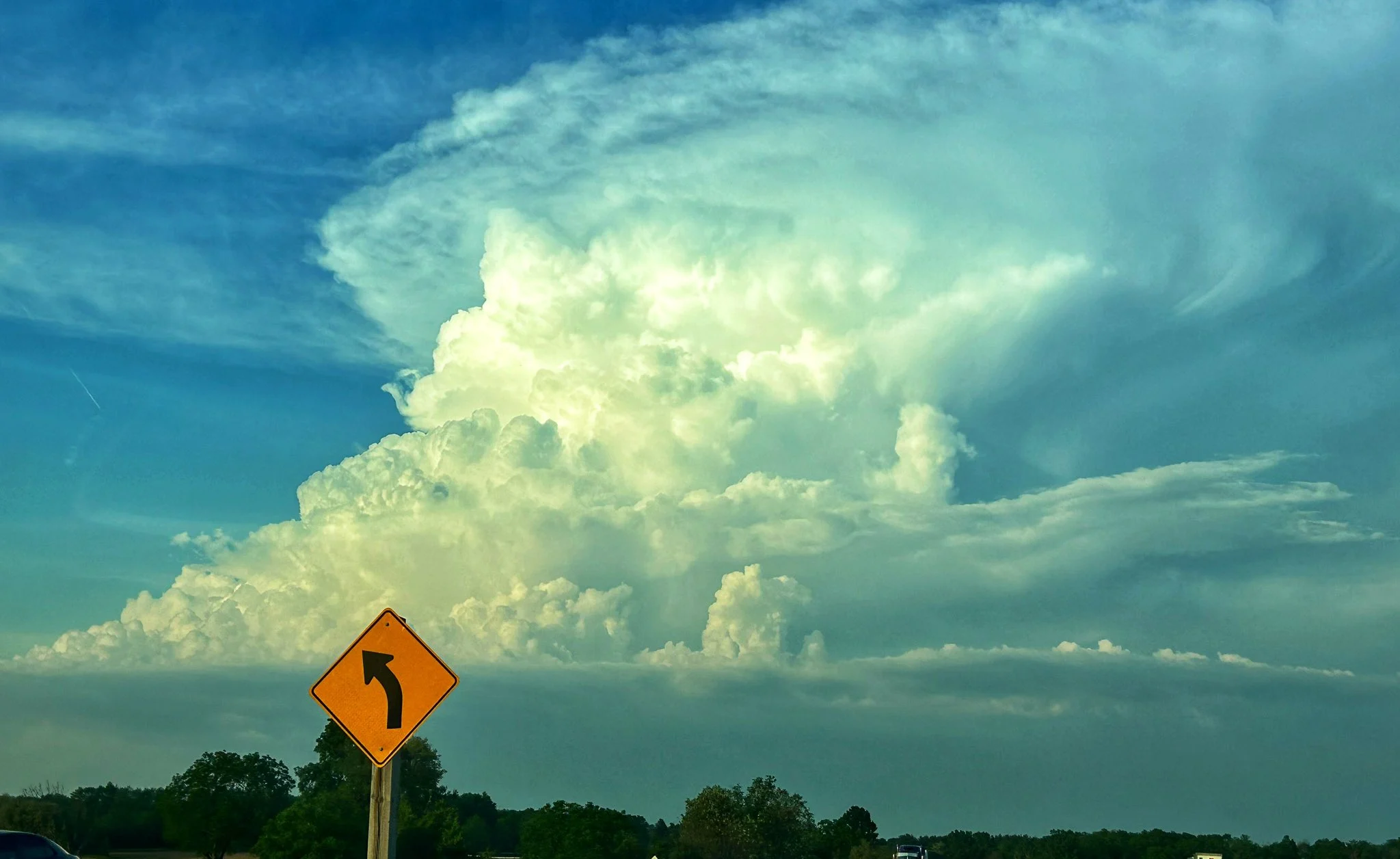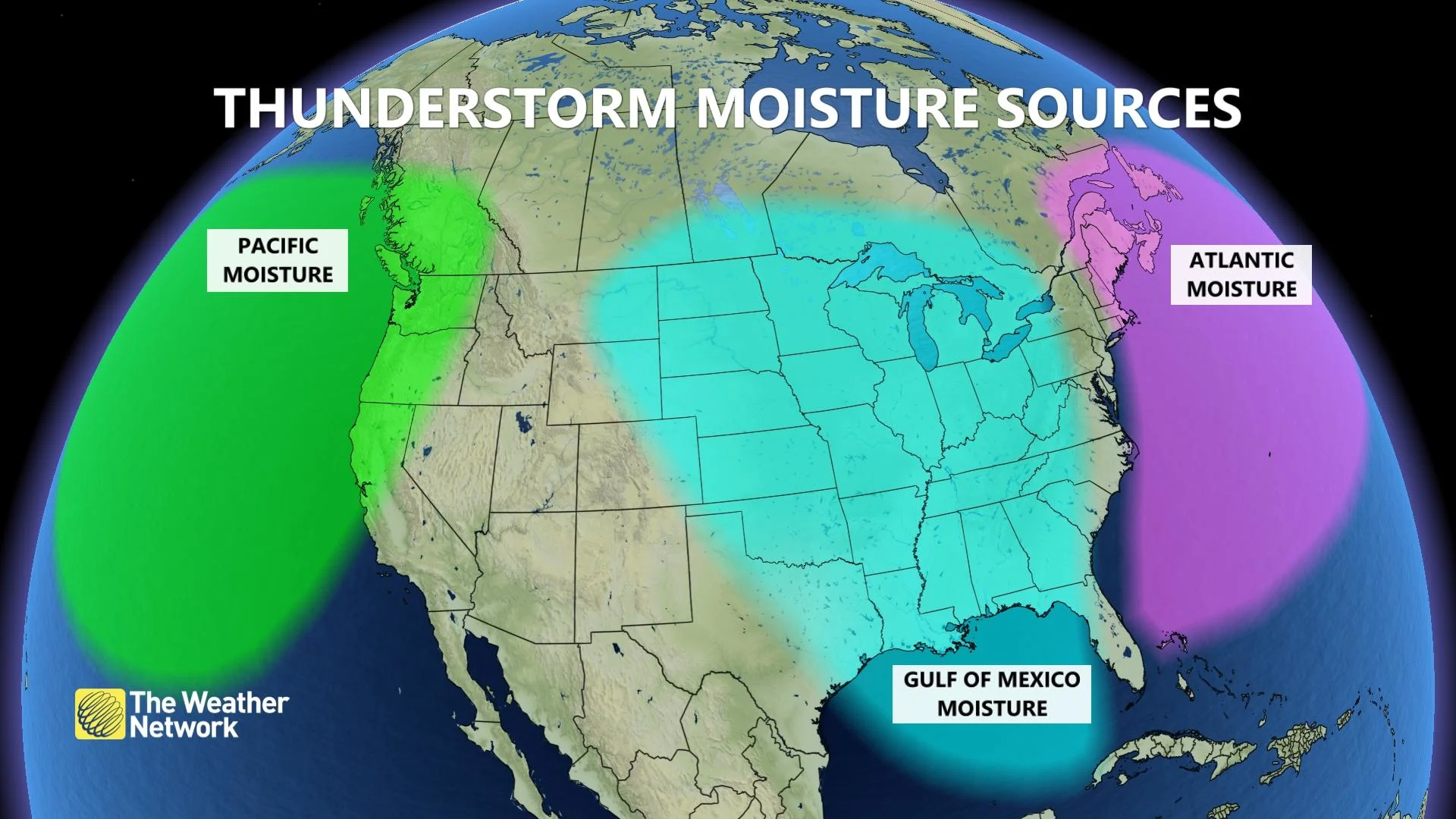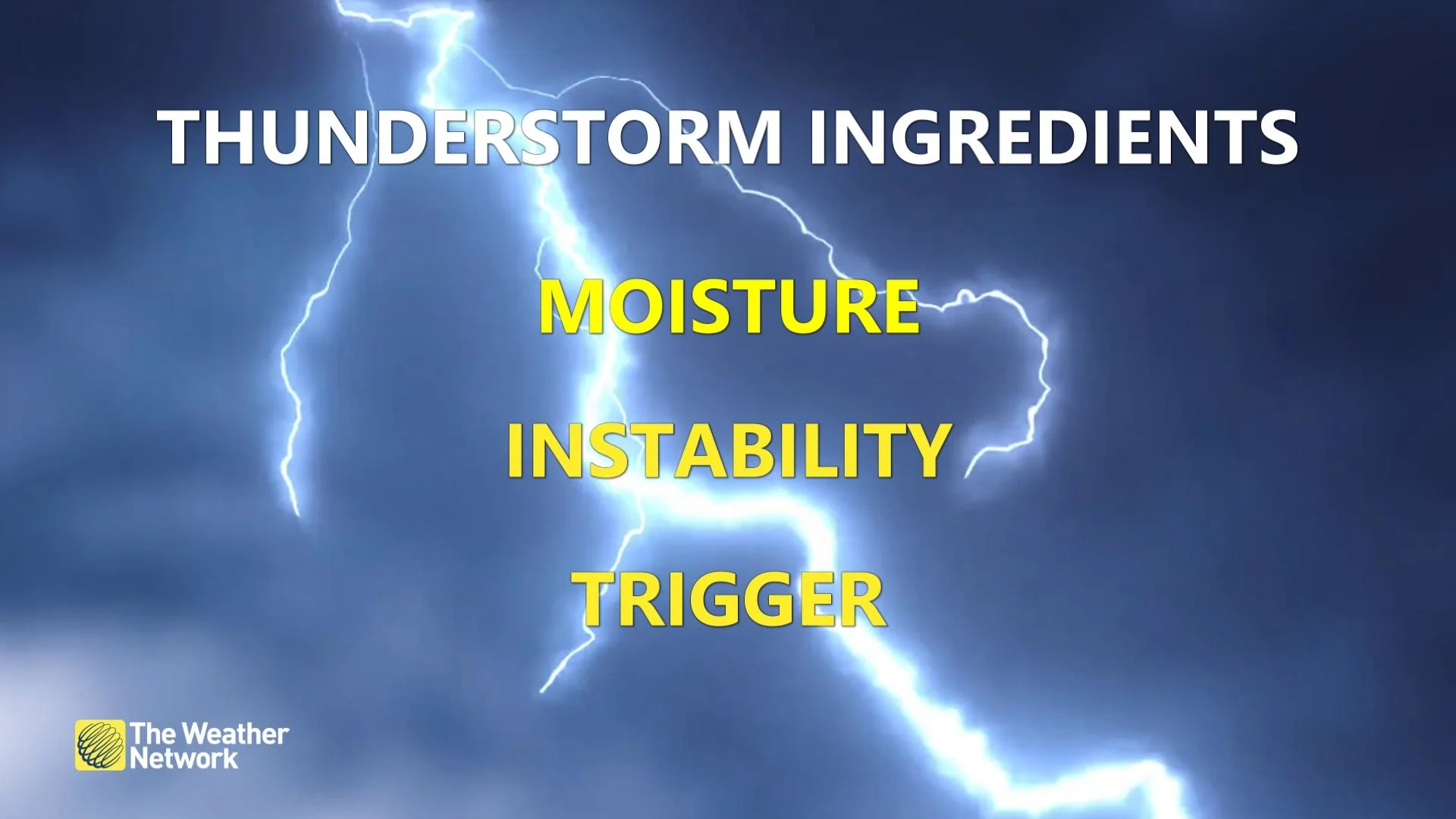
How the atmosphere bakes a perfect thunderstorm
To bake the perfect cake, you need the right ingredients. Similarly, you need a precise formula for a thunderstorm or else you will be disappointed with the result
When baking the perfect cake or crème brûlée, you must follow your recipe exactly or else your cake might become a disaster. Similarly, without the right atmospheric conditions, your thunderstorm forecast might become a bust.
Having an unstable atmosphere is key for thunderstorm development. Without instability, thunderstorms typically don’t form. A parcel of air is considered unstable when there is warm, moist air at the surface, and dry, cold air aloft. Warm air tends to rise, cooling as it does so, which is known as the adiabatic lapse rate. That cooling results in condensation, forming cumulonimbus clouds.
SEE ALSO: Canada's explosive wildfire season linked to lack of thunderstorms
If we compare that to baking cakes, think of it as the baking soda or baking powder: A leavening agent that helps cakes to rise, making them hot and fluffy.

What's a thunderstorm without rain? In eastern North America, our main source of moisture comes from the currents of the Atlantic Ocean, as well as occasionally tapping into the warm waters of the Gulf of Mexico. Living near the Great Lakes, you may experience lake-effect snow in the winter and spring months. In the West, atmospheric rivers can bring moisture from near Hawaii toward the coast, one of many sources of ample rainfall.
One of the worst things to hear as a baker is that your cake is too dry. As a forecaster, that’s similar to hearing your thunderstorm forecast is a bust. To prevent your cake from being too dry, you use milk, eggs, and butter or oil in your recipe, which can make all the difference. I can guarantee that your cake will go from a D to an A+.
Similarly, in severe weather forecasting, having the right amount of moisture will guarantee, for the most part, that the other ingredients will result in a thunderstorm –- depending on how much precipitable water is in the atmosphere of course.

The atmospheric 'oven' that brings storms to life
In baking, none of the ingredients matter if there’s no oven – that’s where the magic happens. You put in raw cake batter that you just mixed together, then after 30 minutes, a beautiful and tasty cake comes out. Oh, can I also mention how delicious the air smells when a cake is baking in the oven?
For storms, the “oven” is the atmosphere, and the factors within it, such as differential heating, frontal boundaries, upslope flow, and low-pressure systems, serving as lifting mechanisms to aid in thunderstorm development. Without those factors, parcels of air cannot rise even if instability is present.

Now, there’s one more ingredient necessary to take a thunderstorm across the severe threshold, giving it that extra punch: Wind shear, the difference in wind speeds at different heights within the atmosphere. When that is present, it can induce rotation within thunderstorms, potentially leading to tornadoes.
Now, there are no tornadoes in baking, but the method of combining ingredients is similar to the way tornadoes form. Whether you are creaming, folding, sifting, or macaronging, if these basic techniques are not followed your dessert may not turn out how you would’ve hoped.

When there is a thunderstorm watch we have the ingredients similar to what’s in a cake, and when there is a warning, this is the equivalent to the cake baking.
If you plan on heading outdoors when storms are in the forecast, make sure you plan ahead and do so with caution. But, just like baking, there are consequences that can bring life-threatening injuries if the rules aren’t followed properly.











